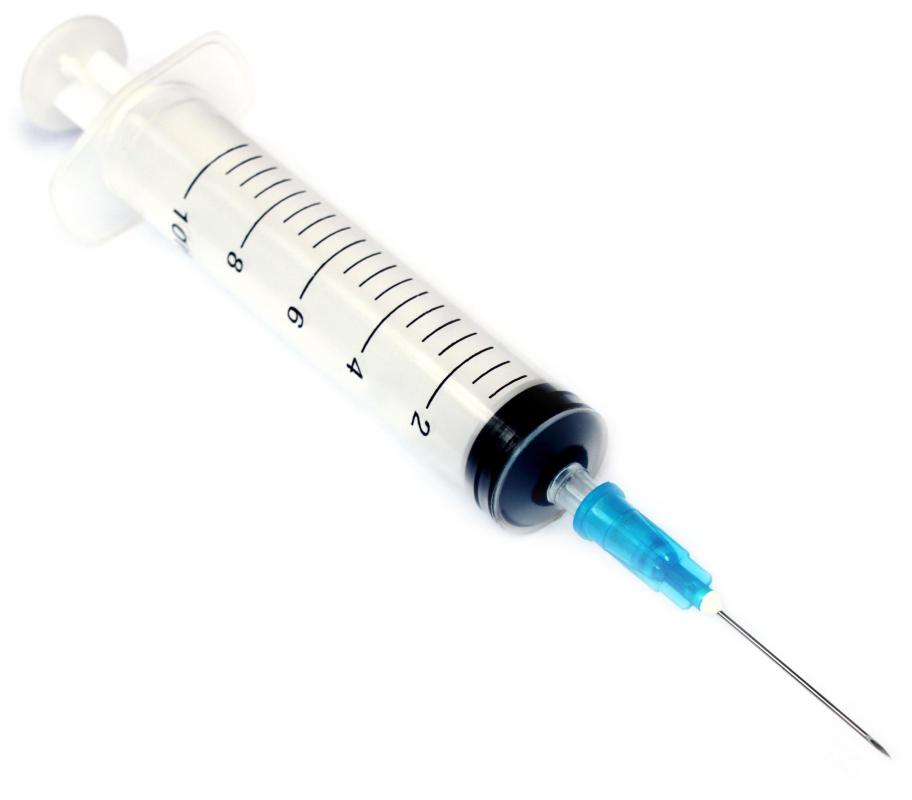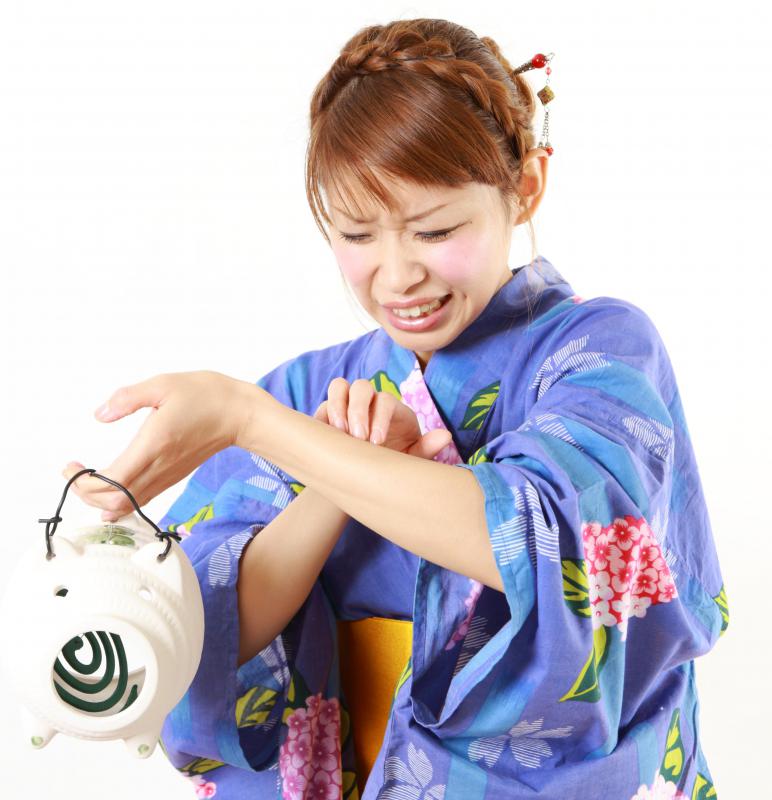At WiseGEEK, we're committed to delivering accurate, trustworthy information. Our expert-authored content is rigorously fact-checked and sourced from credible authorities. Discover how we uphold the highest standards in providing you with reliable knowledge.
How do I get Rid of Keloids?
There are a couple of different ways to get rid of keloids, and a lot depends on what caused them, where they’re located, and how long they’ve been growing. In general, keloids are raised lumps of collagen that form when scar tissue grows irregularly or even just more quickly than a wound heals. You may be able to remove small lumps with simple home remedies; applying regular pressure to the area often works, for instance, and regularly dabbing the site with natural antiseptics like tea tree oil might also get results. Other solutions typically need the intervention or at least the oversight of a trained medical professional. Liquid nitrogen applied to the site at regular intervals can freeze the growth off in many cases, and steroid injections can help it shrink from the inside out. Very stubborn or annoying growths can also be removed surgically, though this solution is normally reserved for very extreme cases since it tends to carry a lot of risks and possible side effects.
Understanding the Condition

Keloids can appear anywhere on a person's body, but they are most common on the back, ears, chest, and shoulders. They can develop within the scar tissue of any injury or disruption to the skin, including piercings, bug bites, acne, and cuts. These types of scars can affect anyone at any age.
They aren’t usually considered a “normal” part of healing, but in most cases there isn’t anything inherently troubling about them, either. Just the same, you may want yours removed if they’re causing you trouble. Keloids are often shiny and unsightly, and they can be painful if they impede movement or continue to grow larger after healing. In these cases, people often look into ways to remove them, ranging from simple home remedies to more advanced medical procedures.
Common Home Remedies

Natural, at-home methods are usually a good place to start, especially if your keloids are small or have just formed. Applying pressure is usually an easy beginning, especially for small keloids that have developed as a result of things like acne or ear piercings. Sometimes just pressing the site with your hand or a few fingers will work, though in most cases the pressure needs to be more or less constant in order to be effective. Affixing a tight bandage or wrapped gauze is often the best course.

Tea oil and vitamin E oil can be applied several times a day to help get rid of keloids, too. These work to isolate the skin below the abrasion and can help the tissues shrink and, ultimately, disappear. Each of these natural methods takes time to work, so a person may not see results until weeks or even months after beginning the treatment.
Liquid Nitrogen

Many people also find liquid nitrogen effective. Regular applications of this abrasive substance can essentially freeze the growth off, usually by killing the cells that attach it to the skin. Freezing off a keloid often involves several treatments, usually about a month apart. This method is usually successful, but a lot depends on the size of the growth and how regularly you receive treatments. There is a chance that this treatment could permanently lighten the skin where the keloid was located, particularly if your skin is already on the darker side to begin with.
Steroid Injections

Steroid injections are another option. These injections are usually given once per month for about six months, after which the keloids have generally flattened down to the skin and become more difficult to see. Another option is silicon strips, which are applied like a bandage over the scar and left on for an entire day. Silicon creams are sometimes also recommended to treat the symptoms that are associated with keloids, like burning, itching, and tingling pain.
Surgical Removal

Excision, which is basically surgery, may be used if all other treatments are unsuccessful. This is typically a last resort because of the fear that the new surgical scar will develop a new keloid. Surgeons often administer steroid injections or radiation after surgery to prevent new growths at the incision site.
AS FEATURED ON:
AS FEATURED ON:


















Discussion Comments
Pressure works best for earlobe keloids. I had one on my left ear when I was much younger. I noticed it when it was small, so I took the jewelery out so it wouldn't get too much bigger, then, just by massaging it whenever it itched, and by sleeping on my left side, with my arms under my pillow, so there was pressure on it as I slept, it gradually got smaller and smaller every day. Now it's gone. There is one on my right ear now because I tried to enlarge the hole too quickly, and it was fairly larger than the one I had on my left ear.
I got injections, since they say keloid scarring is worse when you're older. It stopped the keloid from growing and now I've been massaging it and sleeping on my right side and within weeks it's pretty much gone.
@croydon - Yeah, I don't think that ordinary stuff for getting rid of scars will work when you're trying to reduce a keloid scar. You pretty much either have to try and use some of the natural remedies, which aren't going to be that helpful if the keloids are large, or you have to go to the doctor.
Unfortunately, from what I understand, keloids are really difficult to remove. They will just grow back again if you try to remove them surgically, and might even grow back worse if you are unlucky. There are some terrible pictures of them online.
My mother has some keloid growth around a scar left from some surgery. I don't think it looks that bad, but she's quite ashamed of it. It's just over her shoulder blade though, so most of the time it's fairly well hidden.
She says that the worst thing about it is the itching and that sometimes it can just itch so much she makes it sore by scratching it. The only thing that seems to make it feel better is to rub bio-oil onto it, which is this stuff that's supposed to help get rid of scars. I don't think it has faded my mother's scar, but it does help a lot with the itching.
Post your comments